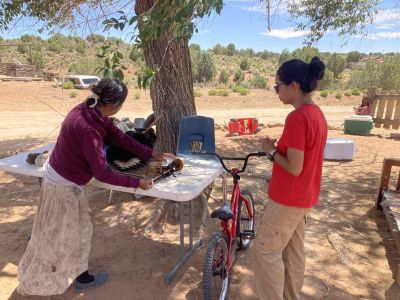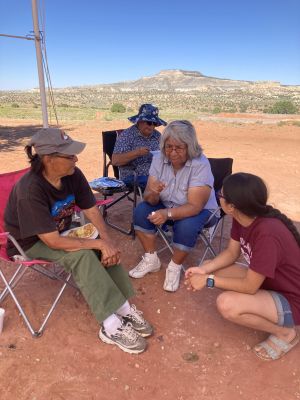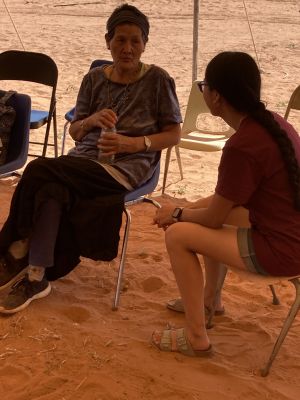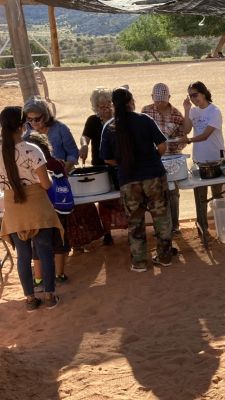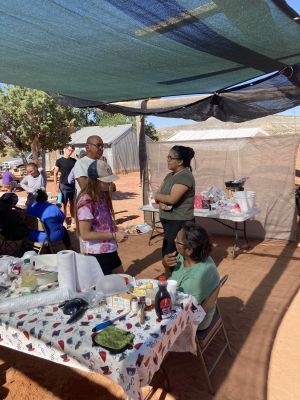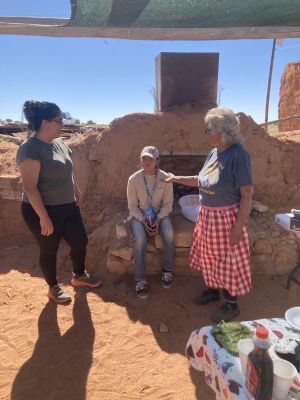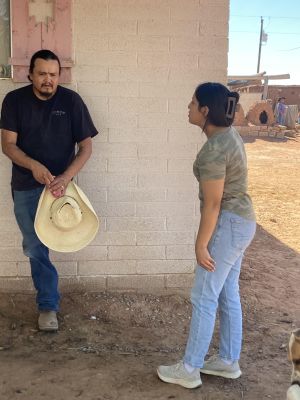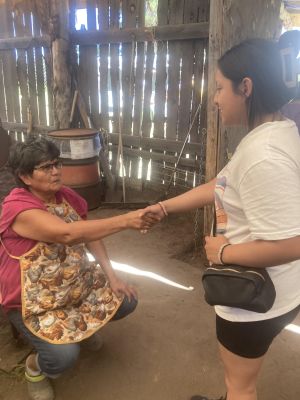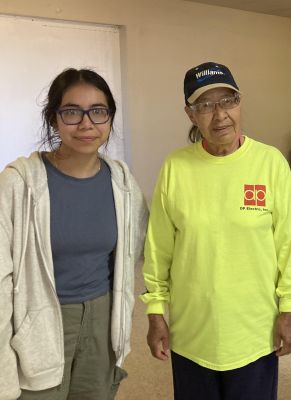Areli Guzman shares her thoughts on Navajo clans and her family’s heritage:
Yá’ át’ ééh (Hello)
Shi éi Areli yinishyé (I am called Areli)
Ákót’ éego Naakai dine’ é asdzáán nishłí (In this way, I am a Mexican woman)
Here in the Navajo Nation, I am a person with an actual clan name: Naakai.
When Virginia, Estefania and I – all of whom share Mexican heritage — were first told that we have a clan name, my reaction was surprise. Before coming on this Study Service Term, I felt as if both cultures, the Navajo and my Mexican culture, were so different. I never imagined how many similarities I would find. I especially never imagined that I would have a clan name and feel like part of the Navajo extended family. I have been told that Naakai diné means the wandering people, and refers to the Mexicans or Spanish who came up from the south.
We were told a story of how the Mexican clan originated. Historically, trading has been a common way for Navajos to get goods and materials. Apparently, a group of Mexican men were hungry and had no food so they traded one of their women with the Navajos for some food. Since Navajo society is matrilineal, when this first Mexican woman began having children, they were part of her clan. This form of trade is one I would disagree with because I don’t believe women should be traded as if they belong to the men, however, having a clan makes me feel connected in a special way.
Besides just having a clan name, I realize there are a lot of similarities between the Navajo and my Mexican culture. In the Navajo culture time and space are circular and not linear. This concept was introduced to me by Sarah Augustine, one of our instructors, but I have now heard about it from other speakers as well. I can now see a circular trend within both the Navajo culture and the Mexican culture. A lot of our speakers told stories in a circular way, which I am familiar with since I grew up hearing moral stories from my mom and uncles in a similar way. It seems like some of my classmates had a hard time understanding the stories told by Navajo people since they are not accustomed to this circular way of sharing information.
I have also seen lots of commonalities between the cultures, such as the importance of greetings and superstitions. In both cultures it is very important to greet people. The way you do it is different, but the fact that you have to do it is the same. Regarding superstitions, one person told us a story about skin walkers (shape shifters). We were told not to tell the rest of the group, so I won’t go into detail, but listening to the story made me remember the times my mom and uncles would tell me stories. They also had superstitions and stories like that. One popular one is called, “La Llorona”.
La Llorana is a story about a lady who was left by her husband and so she drowned her two kids in a river. Depending on the storyteller the reasons for drowning them are different, but the story goes that at night near lakes or rivers some people can hear a woman screaming and crying for her children. This type of story can be heard in both Navajo and Hispanic communities.
I like the connection I see between Navajo and Mexican people. When we told our Navajo hosts we were Mexican they would tell us phrases in Navajo and then speak to us in Spanish with the phrases they knew. It made me feel welcome that they tried to speak our native Spanish language to us.
I wonder what it could have been like if we would have arrived without the Bilagáana (American, or white people) students. Virginia, Estefania and I realized that when we sat alone people assumed we were Diné and would ask us what our clans were. We would tell them we are Naakai and there would be an immediate connection.
Ahéhee’ (thank you)

